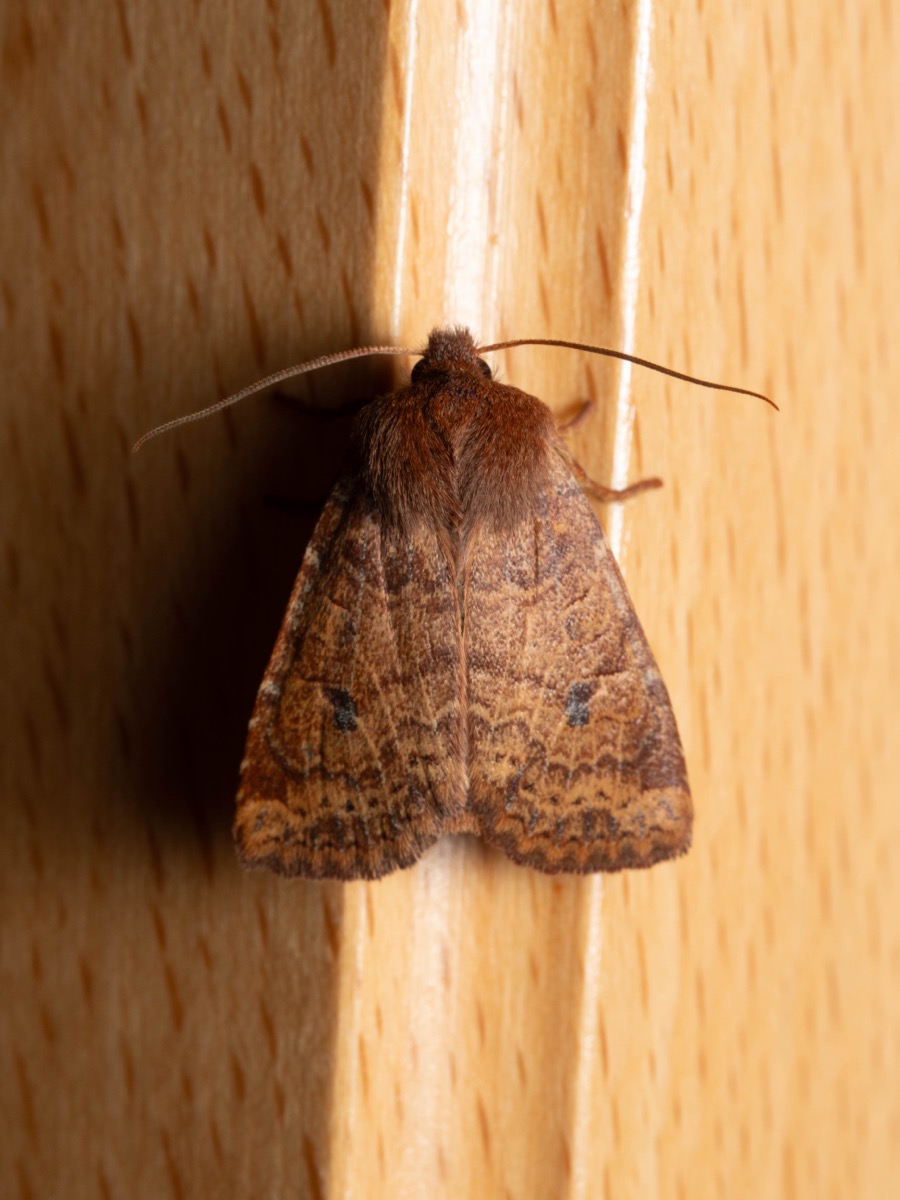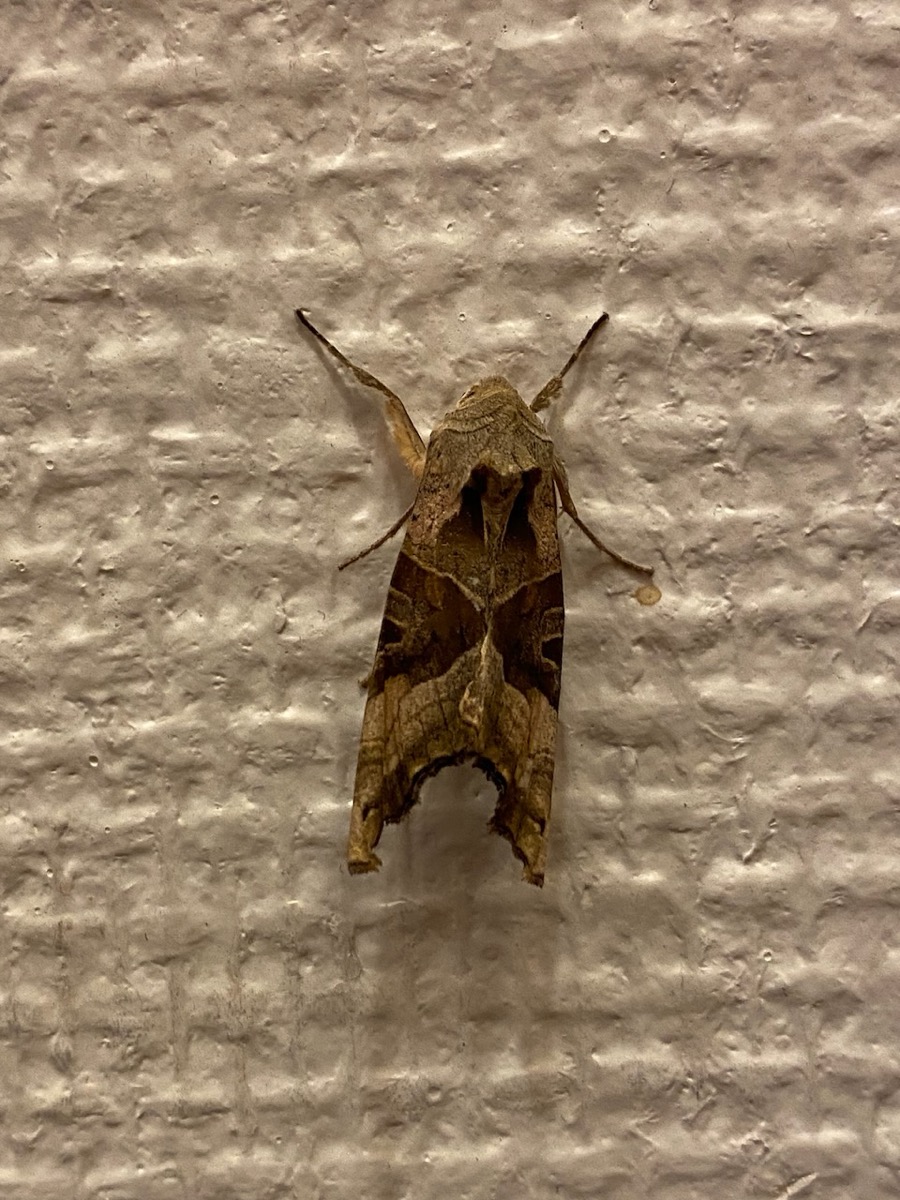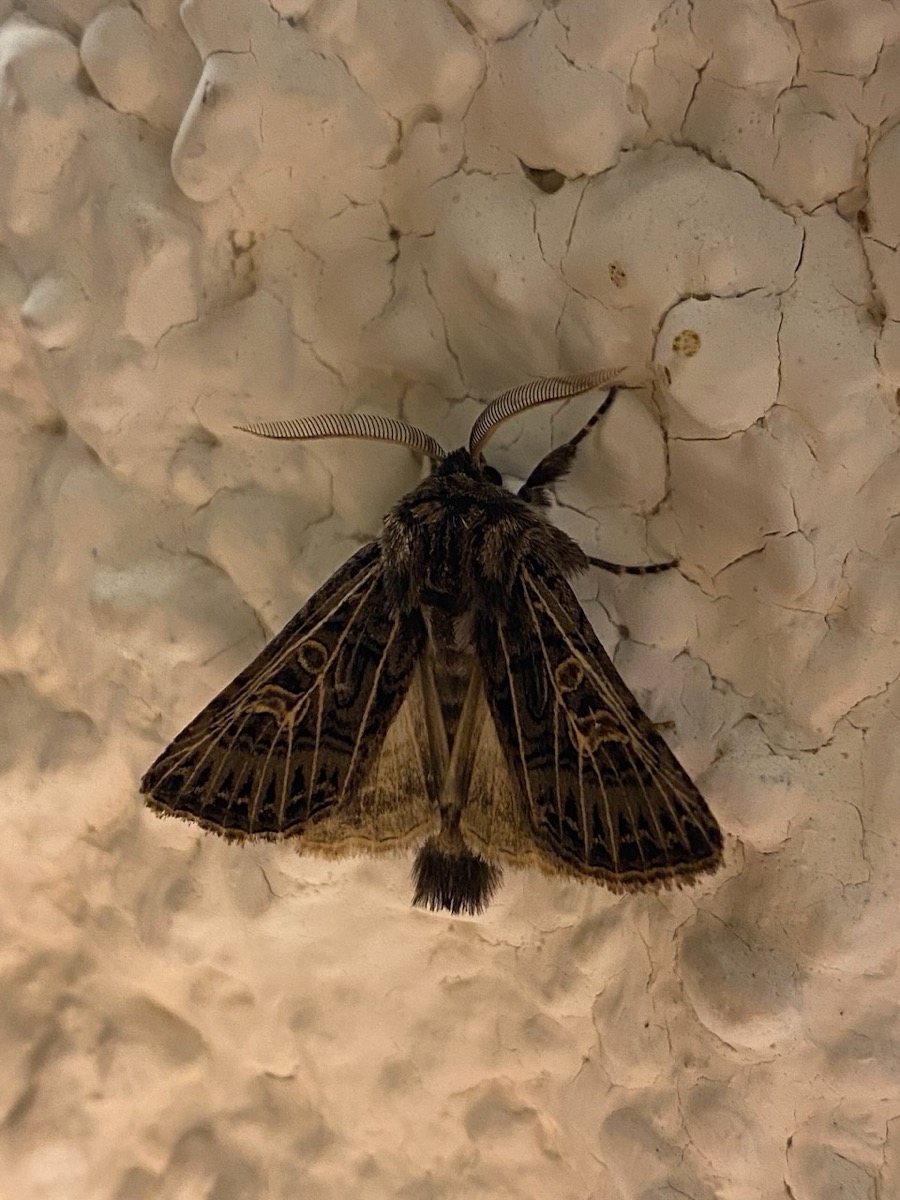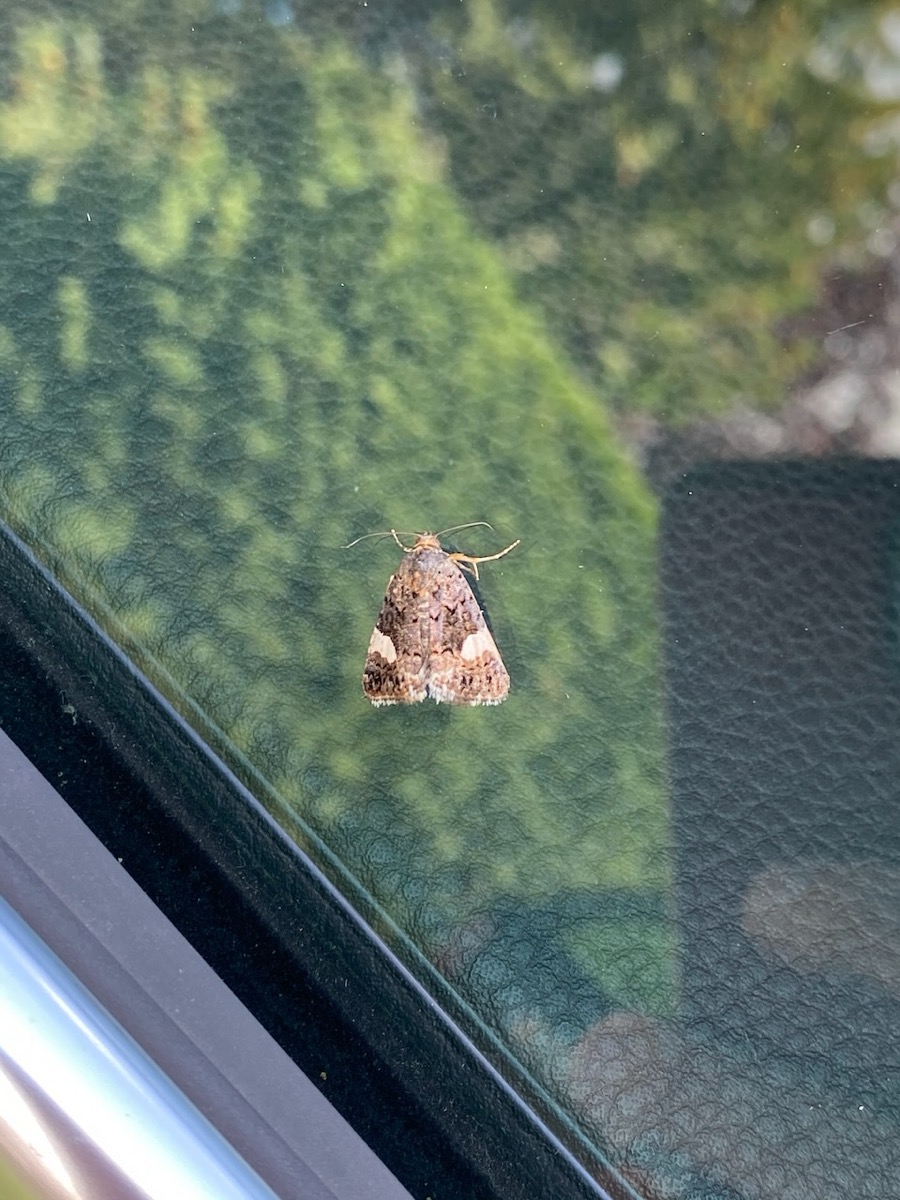NOCTUIDAE – OWLET MOTHS
The Noctuidae are a family of nocturnal moths, commonly known as “owlet moths.” They are among the most abundant and diverse moth families, with over 35,000 species described to date. Noctuids exhibit a wide range of sizes, colors, and wing patterns. Their caterpillars are also highly variable and feed on a broad spectrum of host plants, making them ecologically significant. Some species are agricultural pests, damaging crops and ornamental plants. Noctuids also play an essential role in food chains as prey for nocturnal predators such as birds and bats. They are found worldwide and occupy a variety of habitats.
Characteristics
- Medium to large moths, often stout and robust
- Narrow forewings, typically brown, gray, or cryptically patterned
- Hindwings sometimes vividly colored (orange, yellow, red…)
- Functional proboscis, adapted for nocturnal nectar feeding
- Filiform antennae in both sexes, sometimes slightly pectinate in males
Habitat
Noctuidae inhabit:
- All types of terrestrial environments: forests, meadows, fallow land, scrublands, gardens, crops
- Temperate, Mediterranean, tropical, and subalpine zones
- Both open and wooded areas, from wild to urban settings
Biology
- Strictly nocturnal activity, attracted to artificial light
- Eggs laid on a wide range of host plants
- Phytophagous larvae, often smooth and sometimes nocturnal as well
- Pupation in soil or under leaf litter, sometimes in a loose cocoon
- Many species are multivoltine (several generations per year)
Common genera and species
- Noctua – Noctua pronuba, N. comes: yellow hindwings, very common and widespread
- Agrotis – Cutworms, agricultural pests (A. segetum, A. exclamationis)
- Autographa – Forewings with metallic marks (A. gamma)
- Mamestra, Xestia, Mythimna – Numerous brownish or pale owlet moths
- Catocala (often transferred to Erebidae) – Brightly colored hindwings
Notable species
- Noctua pronuba – Large Yellow Underwing: very common, yellow and black hindwings
- Autographa gamma – Silver Y: also active by day, silver Y-shaped mark on forewings
- Agrotis ipsilon – Migratory species, pest on vegetable crops
- Mythimna unipuncta – Migratory species linked to grasses
Special features
- Very good flight capacity, sometimes large-scale migrators
- Highly developed camouflage: bark, moss, rock mimicry
- Key role in nocturnal food webs
- Several species have agronomic importance and are studied in applied entomology



